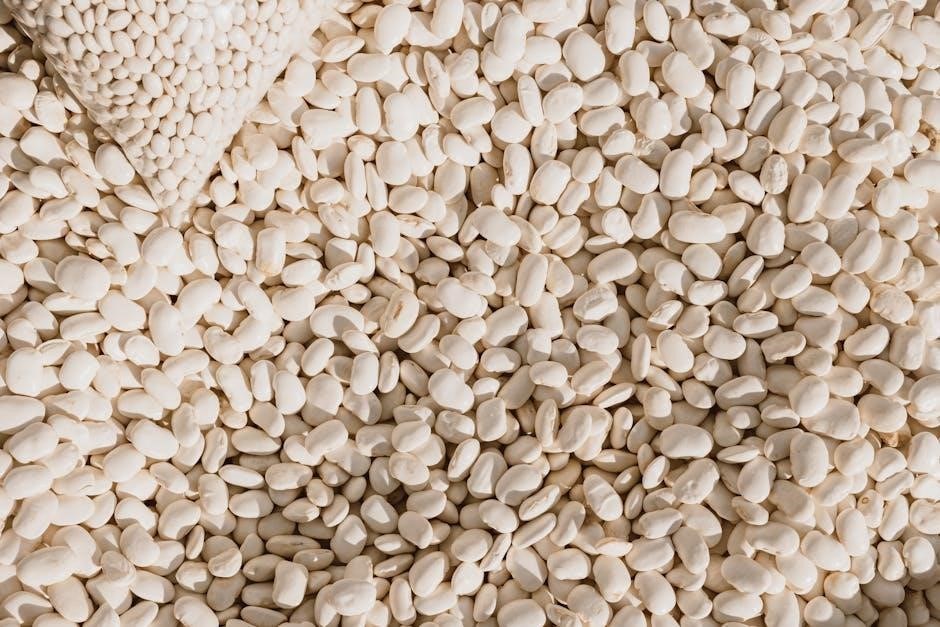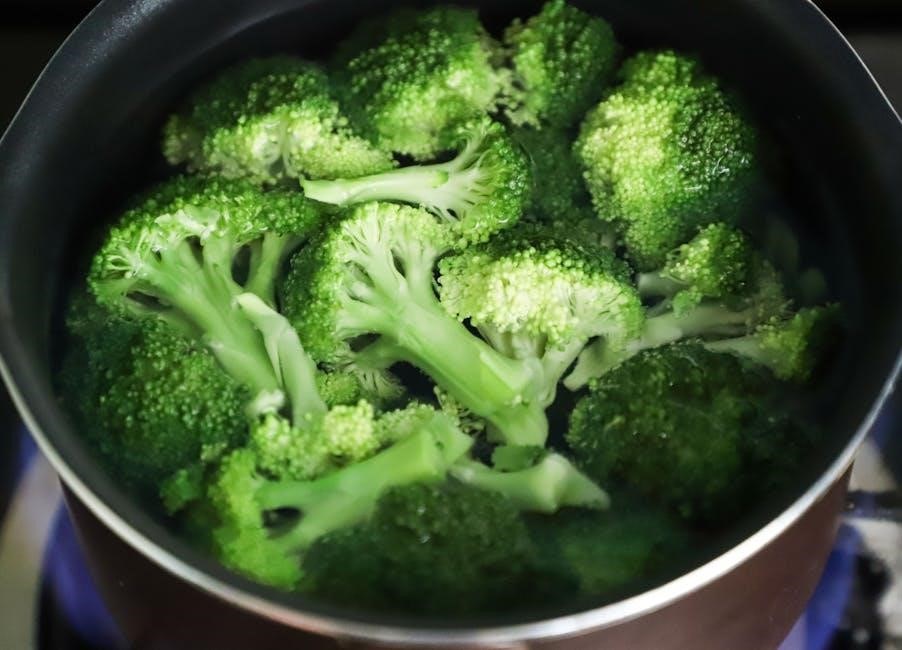Embarking on a vegetarian keto journey? Discover a wealth of resources online, including free PDF diet plans. These plans offer structured guidance, outlining what to eat and avoid, along with delicious recipes. They simplify meal planning, making the transition to a vegetarian keto lifestyle easier and more sustainable. Find your perfect plan today!
Understanding the Vegetarian Keto Diet
The vegetarian keto diet combines the principles of a ketogenic diet with vegetarianism, presenting a unique approach to weight management and overall health. A standard keto diet emphasizes high-fat, moderate-protein, and very low-carbohydrate intake, shifting the body’s primary fuel source from glucose to ketones, derived from fat. This metabolic state, known as ketosis, can lead to weight loss and other potential benefits.
For vegetarians, who abstain from meat, the challenge lies in finding alternative protein sources and ensuring adequate nutrient intake while adhering to the strict carbohydrate limitations. Common vegetarian staples like beans, lentils, and grains are often high in carbs and must be significantly limited or avoided. The diet relies heavily on non-starchy vegetables, healthy fats, and plant-based protein sources like tofu, tempeh, nuts, and seeds. Dairy products and eggs, if included, can also contribute to protein and fat intake. Successfully navigating this diet requires careful planning and a thorough understanding of food composition to maintain ketosis and avoid nutritional deficiencies. It’s essential to consult with a healthcare professional or registered dietitian to tailor the diet to individual needs and health conditions.
Foods to Eat on a Vegetarian Keto Diet
Adhering to a vegetarian keto diet involves carefully selecting foods that are low in carbohydrates and rich in healthy fats and moderate protein. Non-starchy vegetables are a cornerstone of this diet, including leafy greens like spinach, kale, and lettuce, as well as broccoli, cauliflower, zucchini, and bell peppers. These vegetables provide essential vitamins, minerals, and fiber while keeping carbohydrate intake low.
Healthy fats are crucial for maintaining ketosis and can be obtained from sources like avocados, olive oil, coconut oil, nuts, and seeds such as almonds, walnuts, chia seeds, and flax seeds. Plant-based protein sources are also important, with options like tofu, tempeh, and natto. Dairy products, if included, can provide protein and fat through cheese, yogurt, and cream. Eggs are another excellent source of protein and healthy fats for ovo-vegetarians. It’s essential to prioritize whole, unprocessed foods and carefully monitor carbohydrate intake to stay within the ketogenic range. Incorporating a variety of these foods ensures a balanced and nutritious diet while supporting the metabolic goals of the keto diet.
Foods to Avoid on a Vegetarian Keto Diet
Navigating a vegetarian keto diet requires careful attention to food choices, particularly when it comes to avoiding high-carbohydrate items. Grains, including wheat, rice, oats, and corn, are generally restricted due to their carbohydrate content. Legumes, such as beans, lentils, and peas, are also limited, although small portions may be incorporated depending on individual carbohydrate tolerance. Starchy vegetables like potatoes, sweet potatoes, and yams should be minimized or avoided altogether.
Fruits, while nutritious, are often limited on a keto diet due to their sugar content; however, berries like strawberries, blueberries, and raspberries can be consumed in moderation. Processed foods, sugary snacks, and sweetened beverages should be strictly avoided, as they can quickly derail ketosis. It’s crucial to read food labels carefully and be mindful of hidden sugars and carbohydrates in sauces, dressings, and other condiments. By focusing on whole, unprocessed foods and limiting high-carbohydrate items, individuals can successfully maintain ketosis while adhering to a vegetarian diet.
Sample Vegetarian Keto Meal Plan
A sample vegetarian keto meal plan provides a structured approach to maintaining ketosis while adhering to a meat-free diet. For breakfast, consider a spinach and feta omelet, offering healthy fats and protein. Lunch could consist of a Mediterranean roasted vegetable salad with feta cheese, providing fiber and essential nutrients. Dinner might feature a cheesy eggplant bake, a satisfying and low-carb option.
Snacks can include options like sugar-free halvah cups or vegan keto cookies ‘n cream fat bombs, addressing sweet cravings without compromising ketosis. Remember to adjust portion sizes based on individual caloric needs and carbohydrate tolerance. This meal plan emphasizes whole, unprocessed foods, ensuring a balanced intake of fats, proteins, and essential vitamins and minerals. It’s a starting point that can be customized to suit personal preferences and dietary requirements, making the vegetarian keto journey both sustainable and enjoyable. Always consult with a healthcare professional.
Breakfast Ideas for Vegetarian Keto

Kickstart your day with delicious and satisfying vegetarian keto breakfast options! A swiss chard omelette is a simple and nutritious choice, packing protein and essential nutrients. Scrambled tofu with sauteed mushrooms and spinach offers a plant-based alternative, ensuring adequate protein intake. For a creamy and decadent treat, try chia seed pudding made with almond milk, topped with berries and nuts.

Avocado toast on low-carb bread provides healthy fats and fiber. A coconut flour pancake, topped with sugar-free syrup and whipped cream, can satisfy your sweet tooth without derailing your ketosis. Keto-friendly granola bars offer a convenient on-the-go option. Remember to focus on high-fat, moderate-protein, and low-carb ingredients to maintain ketosis. These breakfast ideas provide a range of flavors and textures, ensuring a delightful start to your day while adhering to your vegetarian keto dietary goals.

Lunch Ideas for Vegetarian Keto
Power through your afternoon with these flavorful and nutritious vegetarian keto lunch ideas! A Mediterranean roasted vegetable salad with feta (or a dairy-free alternative) provides a burst of fresh flavors and healthy fats. Keto veggie lasagna, crafted with zucchini noodles and a rich cheese sauce, offers a comforting and satisfying meal. Stuffed bell peppers filled with cauliflower rice, cheese, and spices create a hearty and filling option.
Consider a creamy mushroom soup, packed with umami flavor and essential nutrients. Eggplant parmesan bake, a cheesy and comforting dish, provides a delightful blend of textures and tastes. A simple salad with avocado, olives, and a keto-friendly dressing offers a quick and easy option. Remember to prioritize healthy fats, moderate protein, and low carbohydrate counts to maintain ketosis. These lunch ideas offer variety and flavor, ensuring you stay satisfied and on track with your vegetarian keto diet.
Dinner Ideas for Vegetarian Keto
Elevate your evenings with these delectable and satisfying vegetarian keto dinner ideas! Enjoy a hearty cauliflower “fried rice,” loaded with low-carb veggies and savory spices. Indulge in a creamy spinach and artichoke casserole, a comforting and cheesy delight. Vegetarian Nargisi Kofta, a Mughlai-inspired dish with paneer, offers a rich and aromatic experience.
Try a zucchini and ricotta bake, a light yet filling option perfect for warmer evenings. Keto-friendly eggplant lasagna, layered with cheese and tomato sauce, provides a classic comfort food experience. For a quick and easy meal, consider a loaded avocado with cheese, sour cream, and your favorite toppings. These dinner ideas showcase the versatility and flavor potential of a vegetarian keto diet, ensuring you end your day feeling satisfied and nourished. Remember to focus on healthy fats, moderate protein, and minimal carbohydrates for optimal results.
Snack Ideas for Vegetarian Keto
Curb those cravings with these tasty and convenient vegetarian keto snack ideas! Enjoy a handful of nuts, such as almonds or walnuts, for a quick dose of healthy fats and protein. Savor some cheese cubes, like cheddar or mozzarella, for a satisfying and low-carb treat. Prepare some keto-friendly fat bombs, combining ingredients like coconut oil, cocoa powder, and sweetener for an energy boost.
Dip celery sticks or cucumber slices into cream cheese or guacamole for a refreshing and crunchy snack. Hard-boiled eggs are a protein-packed option that can be prepared in advance. Consider a small portion of berries, such as raspberries or blueberries, for a touch of sweetness. These snack ideas will help you stay on track with your vegetarian keto diet while keeping you feeling full and energized between meals. Remember to choose whole, unprocessed foods and to be mindful of portion sizes to maintain ketosis.
Potential Benefits of a Vegetarian Keto Diet
Embarking on a vegetarian keto diet may offer several potential health benefits. Weight management is a primary advantage, as the diet promotes fat burning and reduces carbohydrate intake. Improved blood sugar control is another potential benefit, making it a viable option for individuals with insulin resistance or type 2 diabetes.
Reduced inflammation may also occur, as the diet eliminates processed foods and emphasizes whole, nutrient-dense options. Some individuals report increased energy levels and mental clarity while following a vegetarian keto diet. The diet’s focus on healthy fats can also contribute to improved heart health by raising HDL (good) cholesterol levels. By adhering to a well-planned vegetarian keto diet, individuals may experience these potential benefits while enjoying a variety of delicious and satisfying meals. Remember to consult with a healthcare professional before making significant dietary changes.

Potential Risks and How to Mitigate Them
While a vegetarian keto diet offers benefits, potential risks exist. Nutrient deficiencies, particularly vitamin B12, iron, and calcium, are a concern. Mitigation involves strategic supplementation and consuming nutrient-rich, keto-friendly vegetables. Digestive issues, like constipation, can arise due to low fiber intake. Increase fiber gradually with leafy greens and flax seeds, and ensure adequate hydration.
Electrolyte imbalances (sodium, potassium, magnesium) are common initially, leading to “keto flu.” Address this by supplementing electrolytes or consuming electrolyte-rich foods like avocados and spinach. Restrictive eating patterns may trigger disordered eating in susceptible individuals; therefore, focus on balanced meals and mindful eating. Consulting a registered dietitian is crucial for personalized guidance, ensuring nutritional adequacy and addressing individual health needs. Prioritize whole, unprocessed foods and regular monitoring to mitigate these risks effectively.
Finding Free Vegetarian Keto Diet Plan PDFs
Locating free vegetarian keto diet plan PDFs is easier than you might think! Start with a targeted online search using keywords like “free vegetarian keto meal plan PDF,” “vegetarian keto diet guide,” or “low-carb vegetarian recipes PDF.” Reputable health and wellness websites, blogs specializing in vegetarian or keto diets, and online forums often offer downloadable resources.
Be cautious when downloading from unknown sources, ensuring the website is trustworthy and the PDF is free from malware. Check for credentials of the plan’s creator; ideally, it should be a registered dietitian or certified nutritionist. Explore university extension programs or government health websites, which sometimes provide evidence-based dietary guidelines in PDF format. Remember that free plans are a starting point; personalize them based on your individual needs and preferences.